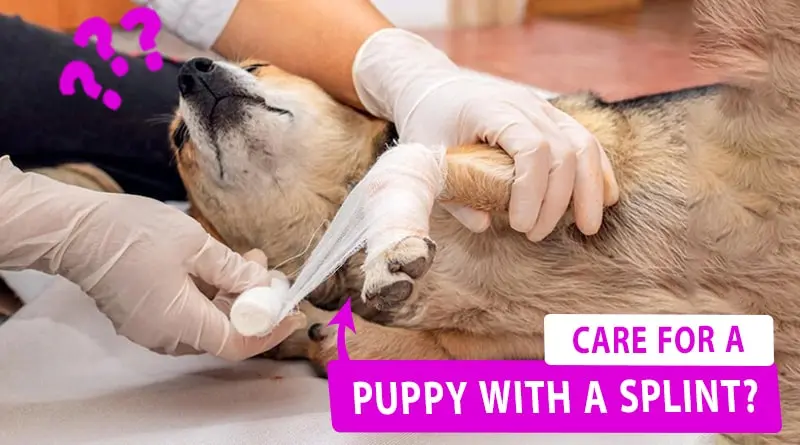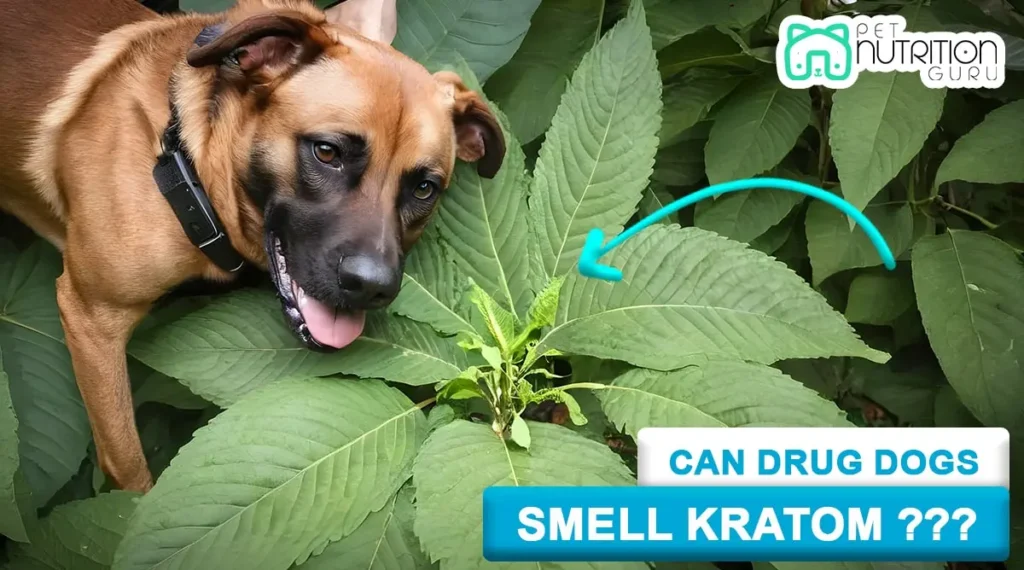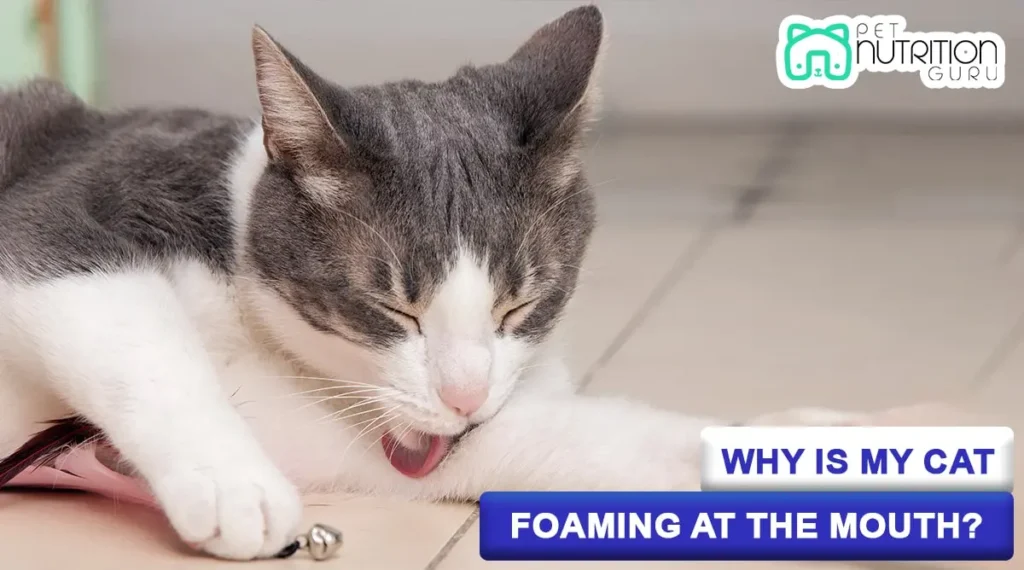When a beloved canine companion experiences an orthopedic injury, splinting becomes crucial to their healing journey. However, what happens after the splint comes off is equally important. Here is the true and short answer related to Dog After Splint Removal:
My Dog is Still Limping After the Splint Removal? Is it Safe?
“Many Dogs will continue to limp after their splint is removed. Even though the affected leg might have recovered, the joint is weak and can be aching when putting weight on it. The Dog’s limp can take weeks or even months to disappear. There are ways to help hasten the rate of the Dog’s Recovery.”
In this article (Dog After Splint Removal), we’ll walk you through the various aspects of caring for your dog post-splint removal.
Popular Question: “How to Recognize and Manage Inverted Nipple on Dogs?“
What is Splinting and Casting?

1. Splinting:
A splint is a rigid or semi-rigid device applied externally to the injured limb. It provides support and prevents movement at the site of injury.
Splints are typically made of fiberglass, thermoplastic, or padded foam. They can be custom-shaped to fit the contours of the limb and are secured in place with bandages or other fastening methods.
Splints are often used for less severe injuries or to stabilize a limb temporarily until a more permanent solution, like a cast or surgery, can be arranged.
2. Casting:
A cast is a more rigid and complete immobilization form than a splint. It is typically made of plaster or fiberglass and encases the entire limb, providing comprehensive support and stabilization.
A cast is applied directly onto the skin after a layer of padding (cotton or synthetic) is placed to protect the skin from direct contact with the cast material.
The cast is then molded to the shape of the limb, securing it in place until the healing process is complete. Casting is often used for more severe fractures or injuries that require extended immobilization.
Popular Question: “My Dog ate Aquaphor“
Is your Dog Limping after the Splint Removal?
Muscle weakening, also known as atrophy, is commonly seen when a limb is put in a cast. The removal of the cast is a positive sign, indicating that the bone has been fully healed.
I highly suggest beginning with short, like, you know, 10-minute leash walks, several times a day for, the first week, then gradually increasing your pet’s, well, you know, activity over the next few, weeks.
What to do if a Dog’s Splint Comes Off?
If your Dog’s splint comes off unexpectedly, staying calm and taking quick action is essential. First, refrain from attempting to reapply the splint yourself.
Instead, gently examine the limb for signs of swelling, redness, or additional damage.
Contact your veterinarian immediately for guidance. They will provide instructions on whether the splint can be reapplied or if further evaluation is needed.
Popular Question: “Platinum Dog Food“
How Long Does a Splint Stay on a Dog?
The duration a splint remains on a dog varies depending on the nature and severity of the injury. In general, splints usually are kept on for a few weeks to allow for proper healing.
However, your veterinarian will provide specific instructions based on your Dog’s condition and progress.
Can My Dog Walk with a Splint?
Most dogs can walk with a splint but may require time to adjust to the altered gait. It is essential to limit their Activity and provide a controlled environment to prevent further injury.
Regular check-ups with your veterinarian are essential to ensure the splint remains in place and monitor your Dog’s progress.
When can Dog walk after Splint Removal?
Just like people, every dog is different. After taking off the splint, things can vary for each furry friend. It depends on factors like how long the splint was on, how much pain they could handle, and if their muscles got weaker.
After splint removal, each dog’s experience can be unique. As they get to move around more and become more active, they should start walking in a more normal way. This process, known as “Dog After Splint Removal,” can take anywhere from a couple of weeks to a few months. So, it’s like each dog has their unique journey to getting back on their paws!
How can I Treat my Dog’s Limping at Home After Cast Removal?
After splint or cast removal, it’s common for dogs to experience some degree of limping or weakness. To aid in their recovery, provide a comfortable and padded resting area.
Encourage gentle, supervised movement to help rebuild muscle strength. Administer any prescribed pain medications and follow your veterinarian’s specific care instructions.
Here is the More Popular Question: “Why is My Dog just Stands in one Spot? “
Why Is My Dog Licking Its Leg After Cast Removal?
Licking is a natural behavior for dogs, but extreme licking of the affected limb after cast removal could indicate pain or anger.
It’s essential to monitor this behavior closely. If it persists, consult your veterinarian, as it may signal a need for further evaluation or treatment.
How to Care for a Puppy with a Splint?

Caring for a puppy with a splint requires extra attention and caution. Puppies are naturally curious and may try to chew or manipulate the splint.
Keep a watchful eye on them, and consider using an Elizabethan collar or alternative protective measures to prevent interference with the splint.
Additionally, ensure the puppy’s environment is safe and potentially hazards-free. Here’s a step-by-step guide to help you navigate this situation:
1. Create a Safe Environment:
Clear any potential hazards from where your puppy spends most of its time. This includes removing sharp objects and small items that can be swallowed and securing electrical cords.
2. Monitor Activity:
Limit your puppy’s Activity to prevent further injury. Avoid vigorous play or activities that could strain the injured limb.
3. Prevent Chewing or Manipulation:
Puppies are naturally curious and may attempt to chew or remove the splint. Use an Elizabethan collar (cone) or a specially designed protective cover to prevent your puppy from interfering with the splint.
4. Keep the Splint Dry:
Avoid letting the splint get wet. If it does, contact your veterinarian for guidance on how to handle it.
5. Regularly Check the Splint:
Inspect the splint daily for any signs of loosening, shifting, or discomfort for your puppy. If you notice anything unusual, reach your veterinarian.
6. Provide Comfortable Resting Area:
Ensure your puppy has a soft and comfortable place to rest. You may want to provide extra padding to cushion the injured limb.
7. Administer Medications as Prescribed:
If your puppy has been prescribed any medications, administer them as directed by your veterinarian.
8. Maintain Regular Vet Check-ups:
Attend scheduled follow-up appointments with your veterinarian. They will monitor your puppy’s progress and may adjust the splint as needed.
Popular Question: “Can Dogs Eat Twinkies?“
How can I help with My Dog’s Limping?
Supporting your Dog’s recovery from limping involves a combination of rest, gentle exercise, and adherence to any prescribed treatments.
Follow your veterinarian’s guidance closely and be patient with the healing process. If you notice any concerning changes or setbacks, contact your veterinarian promptly.
Here are steps you can take to assist your limping Dog:
- Observe and Identify the Cause
- Provide a Safe Environment
- Rest and Limit Activity
- Apply First Aid (if needed)
- Cold Compress (if applicable)
Why is My Dog Still Limping after a Week?
Persistent limping after a week may be due to a variety of factors, including the nature of the injury, the Dog’s age, or underlying health conditions.
It’s essential to communicate any concerns to your veterinarian. They can assess the situation, adjust the treatment plan, or recommend further diagnostic tests if necessary.
Here are some potential explanations for why your Dog might still be limping:
- Incomplete Healing: Some injuries, especially musculoskeletal ones, may take longer than a week to heal fully. Ligaments, tendons, and muscles may require extended recovery time.
- Undetected Fracture or Dislocation: In some cases, a fracture or dislocation may not be immediately evident. X-rays may be necessary to diagnose these more severe injuries.
- Soft Tissue Injuries: Bruising, strains, or sprains to soft tissues can cause prolonged discomfort. These injuries may not be readily visible but can still lead to limping.
- Arthritis or Joint Issues: Chronic conditions like arthritis or other joint problems can significantly cause ongoing discomfort and limp if exacerbated by certain activities.
- Infection or Abscess: An unnoticed wound or bite can lead to infection, causing pain and limping. Abscesses can also develop and may require drainage.
Popular Question: “Natural Way Dog Food“
Will a Splint Cure a Dog’s Broken Leg?

Splints provide essential support for broken legs in dogs. Veterinary care, including diagnosis, immobilization, and potential surgery, is necessary to ensure complete healing.
Patients should follow their veterinarian’s recommendations for the best outcome.
However, it’s essential to understand that a splint is not a standalone solution for a broken leg.
Here’s why:
1. Proper Diagnosis is Key:
Before applying a splint, a proper diagnosis of the fracture is necessary. This may involve X-rays or other diagnostic tests to assess the extent and type of the fracture.
2. Splinting Supports Healing:
A splint immobilizes the broken limb, preventing movement that could disrupt the healing process. It helps maintain the proper alignment of the bones.
3. Potential Need for Surgery:
In some cases, surgical intervention may be required to realign and stabilize the broken bones, especially if the fracture is severe or complex.
4. Comprehensive Veterinary Care:
Beyond splinting, a veterinarian will oversee the overall care of the Dog, which may include pain management, antibiotics (if needed), and monitoring for signs of infection.
5. Follow-up Care and Adjustments:
Regular follow-up appointments with the veterinarian are crucial. They will assess the healing progress, potentially adjust the splint, and determine when it can be safely removed.
6. Physical Therapy and Rehabilitation:
After the splint is removed, rehabilitation exercises and physical therapy may be recommended to help the Dog regain strength, flexibility, and mobility.
Popular Question: “Why Does My Dog Keeps Stretching Neck and Looking Up?“
Splinting Prevention in Dogs
While accidents can happen, there are steps you can take to minimize the risk of injuries requiring splinting. Provide a safe environment for your Dog, free of potential hazards.
Additionally, engage in regular exercise and activities that promote muscle strength and coordination, which can help reduce the likelihood of accidents.
Here are some strategies to help prevent the need for splinting:
- Supervise Playtime
- Provide Proper Exercise
- Use Leashes and Restraints
- Maintain a Safe Environment
- Avoid High-Impact Activities
10 Key Points of Dog Splinting Considerations
Every Dog’s situation is unique, and the specific approach to splinting will vary based on factors such as the type and location of the injury, the Dog’s size and Dog Breed, and their overall health.
Always consult your veterinarian for personalized guidance and follow their advice for the best outcome.
Here are 10 key considerations:
- Type and Location of the Injury
- Proper Sizing and Fit
- Material Selection
- Ventilation and Comfort
- Ease of Application and Removal
- Regular Inspection and Adjustment
- Mobility and Range of Motion
- Duration of Splinting
- Monitoring for Complications
- Patient Compliance and Comfort
Popular Question: “Dog Wakes up Crying in Pain“
Conclusion
Caring for a dog after splint removal requires patience, diligence, and close collaboration with your veterinarian. Understanding the importance of proper splinting can help Dogs recover quickly.
Recognize signs of potential issues to facilitate a smooth recovery. Follow recommended care protocols for an active, healthy life.
Remember, your veterinarian is your best resource for tailored advice and guidance throughout this process.
Disclaimer
This Article (Dog after Splint Removal) contains essential information. We are not a veterinarian but we have Pet Dietary professionals. If your Dog discloses any indication of ailment, call your veterinarian.
Bear in mind that every Dog is Different, and if you have any worries regarding your Canine’s Health or practices, do not wait to seek specialist recommendations from your veterinarian.
If you want more Knowledge about Pet Nutrition, visit our Blog Section.
FAQs (Frequently Asked Questions)
No, adequately applied splints should not hurt dogs. They provide support without causing pain.
Yes, you can. Ensure it’s not too tight, and monitor for any irritation.
Teach basic obedience, use treats, and practice walking calmly beside you with the command “heel.”
Provide high-quality protein, calcium-rich foods, Omega-3 fatty acids, and essential vitamins and minerals. Consult your vet for specific recommendations.
Follow your vet’s treatment plan, maintain a balanced diet, avoid strain on the injured limb, and attend regular check-ups for adjustments.
Latest Articles
- Can Dogs Eat Soursop Fruit? Find Out the Truth Here
- Can Drug Dogs Smell Kratom? The Shocking Truth Revealed
- When Do Dogs Go into Heat after Having Puppies?
- Dog Breed Guides: Mini Australian Shepherd
- Why is My Cat Foaming at the Mouth? Fact you need to Know
- Can Dogs Eat Chicken Heads? Reality, Benefits, Risk
Subscribe to Pet Nutrition Guru
Subscribe below to receive expert pet care advice, pet wellness tips, and exclusive promotions.







